Categories
- animatronics (12)
- apple (11)
- arduino (179)
- art (41)
- articles (121)
- artificial intelligence (11)
- automation (421)
- avr (205)
- bitcoin (3)
- breadboard (9)
- cameras (57)
- cars (26)
- cell phones (28)
- clothing mods (21)
- console mods (26)
- dangerous (94)
- desktop mods (24)
- embedded (5)
- flying things (54)
- fpga (22)
- gaming creations (108)
- interface (225)
- internet (17)
- laptop mods (6)
- lasers (22)
- linux (7)
- magnetic (3)
- medical (12)
- microcontrollers (51)
- misc projects (152)
- msp (12)
- music (124)
- pic (90)
- projects (23)
- pyroedu (76)
- raspberry pi (26)
- robots (312)
- security (36)
- sensors (307)
- software (200)
- solar (19)
- stamp (9)
- tools (149)
- tutorials (98)
- Uncategorized (45)
- usb (44)
- wireless (256)
Sponsors


Posted June 30, 2012 by Chris
“This is one of the best wire strippers I have ever used. If setup correctly, it can be very precise and give feedback telling when the blades have cut deep enough. ”

Posted February 17, 2012 by Chris
“This Excel Worksheet has been designed to visualize data sent from microcontrollers in a very convenient way. There are the following advantages: Quick and easy visualization with several types of graphs, Various configuration settings, Very convenient data format for further calculations, Data exchange in standard data format and Almost everybody owns the software and hardware required”

Posted January 14, 2012 by Chris
“The dsPIC runs on the internal oscillator of 7.37MHz, which is then raised close to 30MHz using the PLL. This enables the board to run without external oscillators and associated loading capacitors. The signal to be analyzed is passed through a high impedance resistor (1Mohms) and then amplified by opamp (TL084). This is done to avoid any high voltage damaging the dsPIC or associated circuit. DC offset is added to the signal to enable it to be measured by ADC (0V to 5V).”
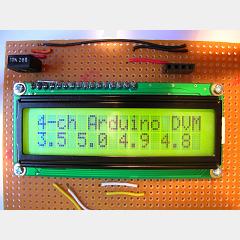
Posted January 8, 2012 by Chris
“A Digital Voltmeter (DVM) is one of the first things you need if you’re building electronics projects. Most of us have one. But what if you need more than one? Enter the Arduino. If you have an Arduino that can drive an LCD, you’ve got a multi-channel voltmeter!”
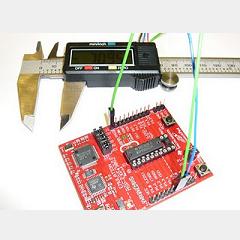
Posted December 17, 2011 by Chris
“MSP430 Launchpad from TI is a new, very affordable (4.35$), value line development platform. It uses MSP430G2231 – msp430 series mcu and includes everything you’ll need to start programming the msp microcontroller. In this article I’ll show how to use this development platform to read data from digital calipers and send it to a PC RS232 serial port.”
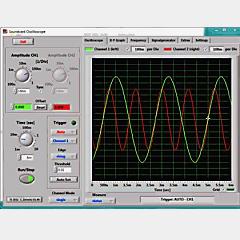
Posted November 21, 2011 by Chris
“The PC based Soundcard Oscilloscope receives its data from the Soundcard with 44.1kHz and 16 Bit resolution. The data source can be selected in the Windows mixer (Microphone, Line-In or Wave). The frequency range depends on the sound card, but 20-20000Hz should be possible with all modern cards. ”
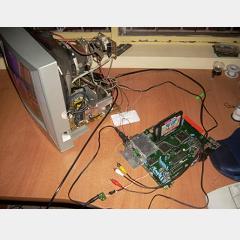
Posted October 15, 2011 by Chris
“RGB signaling provides the cleanest form of analog video you can get from any video device. No wonder why computer monitors have used analog RGB since the introduction of VGA in 1987. But television is another story. Since the dawn of color TV, we’ve been stuck with lossy encoding methods in order to cram a full-color picture in the limited bandwidth of a monochrome transmission.”
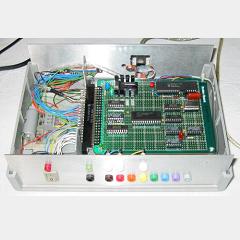
Posted October 12, 2011 by Chris
“The basic system uses a special FIFO chip (7204) which is dual-ported to store logic-state samples which are transferred into a PC and displayed using a Win-32 front-end.” If you’ve ever been curious about building your own logic analyzer, here’s a well documented open-source analyzer that will help get you started.

Posted October 2, 2011 by Chris
“After visiting some web pages about 2.4 GHz ISM band spectrum analyzers based on the CYWM6935 module, I tried to build my own analyzer, but with some improvements. The references I found on the net used the parallel port or a serial link to a host computer. I want the analyzer to be portable, and easy to transport, so I will use a microcontroller and a graphical LCD.”

Posted September 12, 2011 by Chris
Fans of the ATTiny now have another tool to add to their bag of tricks: an Arduino programmer! This article explains how to use an Arduino to program the ATTiny using the SPI communication protocol. The method is straight forward with no surprises so it could theoretically work with any microcontroller that has an SPI module built in.






